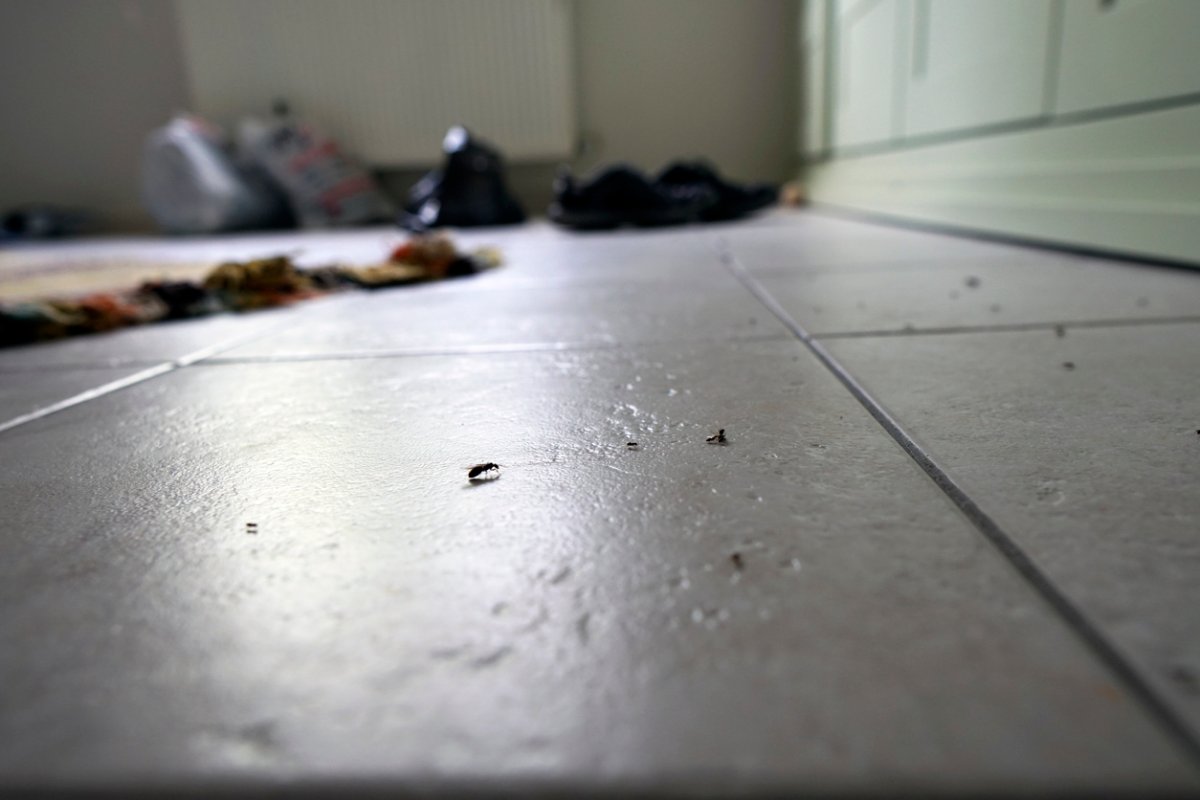We may earn revenue from the products available on this page and participate in affiliate programs. Learn More ›
Q: I keep noticing these long, skinny black bugs around the house. I’m used to seeing the occasional spider, but I have no idea what these long black bugs are or how to get rid of them. What could they be?
A: Finding a bug in the house that you don’t recognize can be an unsettling experience. The sighting may be followed up with questions like, “Is it poisonous?” “Does it bite?” and perhaps most concerning, “Are there more where this one came from?” Most long, skinny black bugs in the house are relatively harmless and are only seeking food or temporary shelter. However, it’s a good idea to take safety into consideration before handling unknown bugs or starting a DIY pest control project. Below are some of the most common long black bugs that residents find around the house, as well as some tips on how to get rid of them. In many cases, the problem can be dealt with relatively easily. However, if an infestation becomes overwhelming, it may be worth calling one of the best pest control companies (such as Orkin or Terminix) for backup.
Small, elongated insects with appendages that look like pincers are earwigs.
Earwigs are not the only variety of black bug with pincers out there, but if the bug also has a reddish-brown tint and long antennae, it is most likely an earwig. Most of the time earwigs prefer a garden habitat, as they feed on decaying matter and small insects. However, harsh weather can drive them indoors, or they may be attracted to damp conditions in a kitchen or bathroom. Sometimes they are brought inside unwittingly on firewood or packages that have been sitting outside.
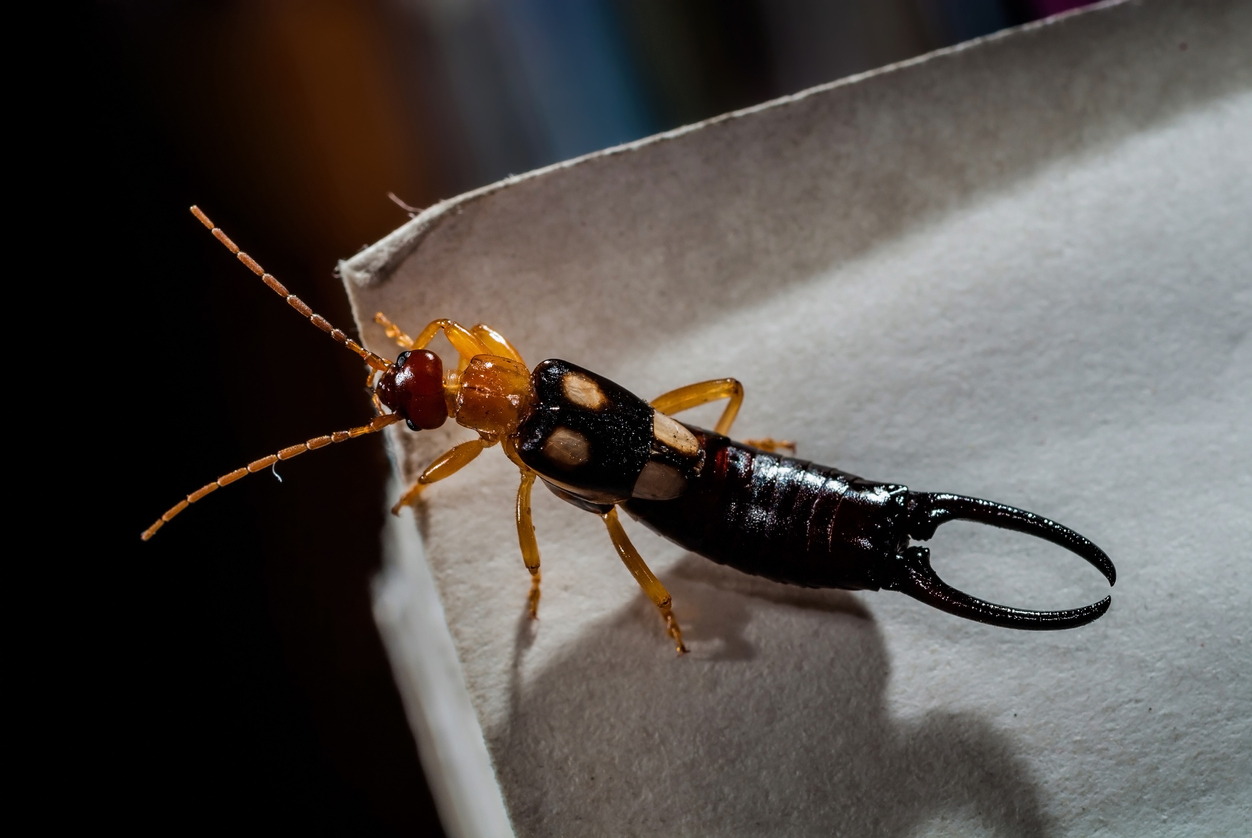
Even when earwigs make their way inside, they are nocturnal and aren’t typically seen during the day. Although they are sometimes referred to as “pincher bugs,” earwigs are actually harmless, and their large pincers are not powerful enough to hurt a human. That being said, most people prefer not to find them in their bathtubs or under their kitchen sinks. One way to keep earwigs from coming inside is to get rid of anything attracting them to the yard. Earwigs are drawn to rotting material, so it’s wise to keep firewood piles at a significant distance from the house and check any logs thoroughly before bringing them indoors. To further lessen the yard’s appeal to earwigs, residents can clean up any piles of leaves or other debris as well. For earwigs that are already indoors, it’s helpful to set traps or use a broom or vacuum to sweep up the insects whenever they make an appearance.
Silverfish and firebrats are related insects attracted to humidity and moisture.
These two insects are easily confused for one another for their long, scaly bodies and dark gray or black color. However, they can be differentiated by a few distinct features:
- Silverfish will have a solid gray or silver coloring. At their largest, silverfish may reach up to ¾ inch in length.
- Firebrats can appear speckled with either dark brown or black spots. They can reach a full inch in length.
While these are two distinct insects, they can usually be dealt with similarly. If they are able to find a food source inside the home, they are more likely to breed there, possibly causing an infestation. The diets of both silverfish and firebrats typically consist of dry pantry foods as well as cardboard and paper. Keeping shelves clean and tidy and sealing items in airtight containers can keep these insects away. Silverfish and firebrats are also attracted to moisture and damp places, so it’s not uncommon to find these tiny black bugs in the bathroom. If the house is excessively humid, a dehumidifier may remedy this issue.
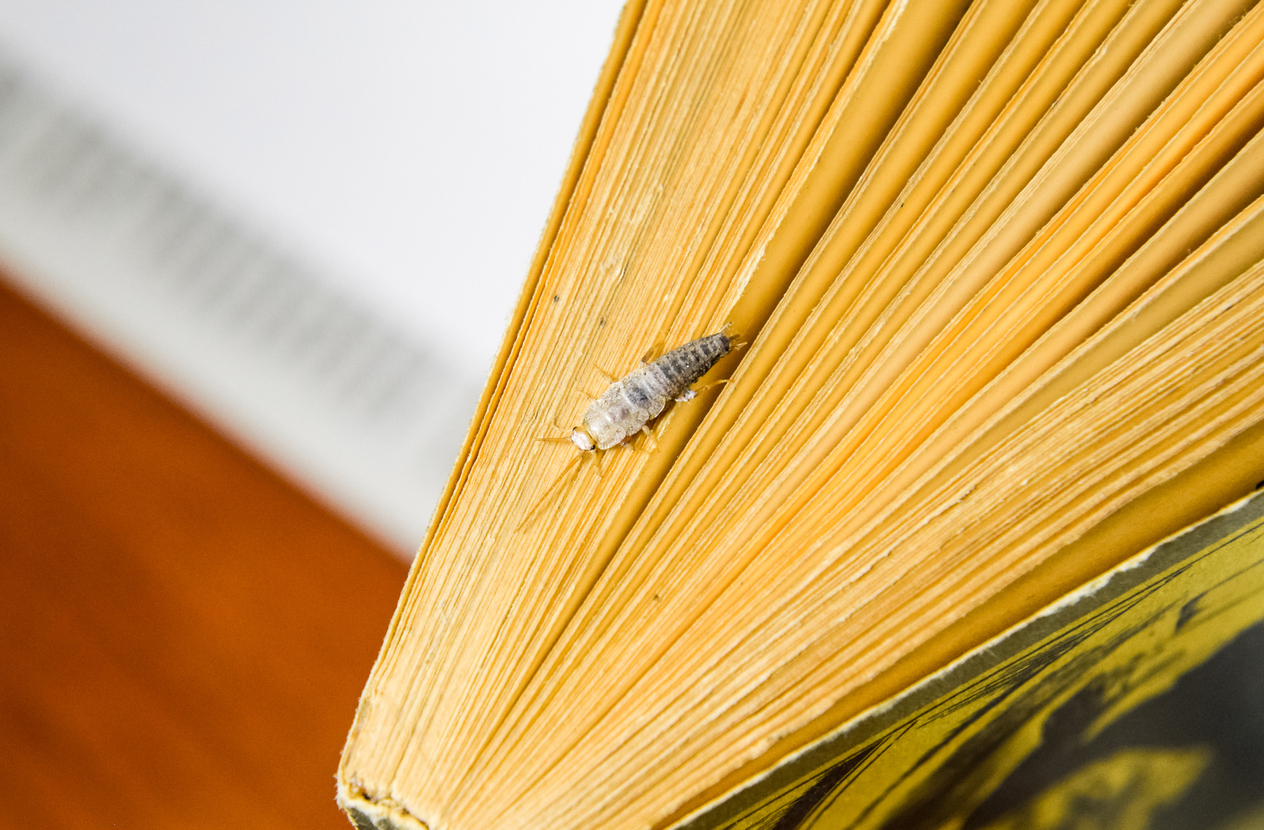
For a more targeted approach, fixing leaks, waterproofing the basement, or running the exhaust fan in bathrooms can also help. Unlike some of the other pests on this list, silverfish and firebrats can cause significant damage if they stick around long enough. It may be prudent to get a professional exterminator on the case if a lot of these bugs seem to be hanging around the house.
Click beetles have an elongated, flattened shape.
Starting out as rust-colored or black larvae called wireworms, click beetles spend the first 3 to 4 years of their lives in soil in this state. At maturity, they can reach up to an inch long in size and have six legs. Like lots of beetles, at first glance they may look like cockroaches. Some varieties also have two eye-like dots on their backs. One way to identify them is by the unique clicking sound they make when flipped on their backs, which is how they get their name.
Click beetles prefer the outdoors, but they may come inside because they are attracted to light (and they’ll stay if they can find food). They are not especially dangerous, and there is no such thing as a “click beetle bite,” but some varieties of click beetles are known to sting whenever they feel threatened. The best way to remove these long black bugs from the home is to sweep them out and address any holes or gaps where they can get inside. It also doesn’t hurt to keep as many lights off in the evening as possible to avoid inviting them back.
Small beetles with prominent snouts are weevils.
Weevils vary in coloring from light brown to dark or reddish black depending on the variety. Some may have light spots or speckles. Usually no longer than a few millimeters, weevils can be surprisingly destructive for their size. They are found in stores of grain, seed, rice, or corn and use their snouts to poke holes in these foods. Sometimes they will travel into a home from outside, but often they are already present in containers of grain at the time of purchase. Weevil larvae form inside kernels or grains and may go undetected until reaching their adult size about a month later.
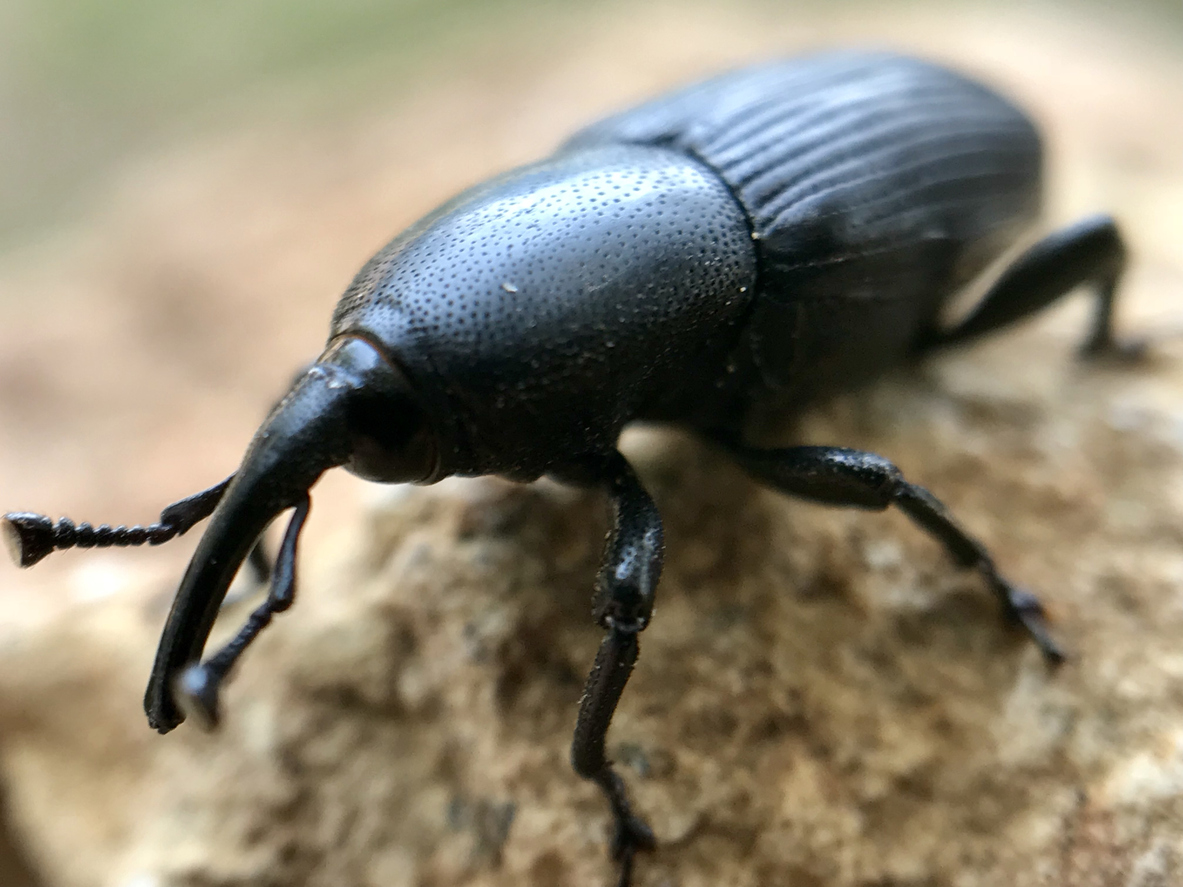
Fortunately, weevils do not pose a significant health risk to humans, and they are relatively easy to get rid of. If weevils or tiny holes appear in any pantry foods, these items must be thrown out. Any containers that held weevil-infested foods will need to be thoroughly cleaned before being used again and should be completely airtight. Residents will want to check other items that were stored nearby and wipe down the shelves. It’s also a good idea to inspect pantry items at the store for signs of weevils whenever possible before buying them.
Long black bugs called webspinners are typically found in the southern U.S.
These black long bugs are about 9 millimeters long and have antennae and six legs. Female webspinners have visible segmented abdomens, and males’ bodies are covered by wings. Webspinners that are found in the home are typically male as they are able to easily fly indoors and are attracted by the light. Females usually prefer to stay hidden, weaving the silk tunnels where these insects live and breed.
Webspinners are completely harmless both to people and their homes. They’re also relatively easy to get rid of—since they’re not likely to breed outside of their established webs, one or two entering the home is not likely to cause an infestation. They can simply be captured and released or swept outside. If residents are noticing these black bugs near the windows, that is probably their point of entry. Caulking around the window is likely to keep them out in the future.
Thrips are small black insects that can destroy plants.
Also sometimes called “thunder bugs,” thrips can be identified by their long, narrow black bodies with a small protrusion resembling a stinger on the back of the abdomen. This appendage is actually used to puncture plants and leaves in order for the insects to feed on them from the inside. Thrips are only about 2 millimeters at their longest and are most often found outdoors on crops unless severe storms or other harsh weather drive them inside—and once they’re inside, it can be difficult to get them out. It’s most common to find these small black bugs in the house during summer storms in regions where thrips are found.
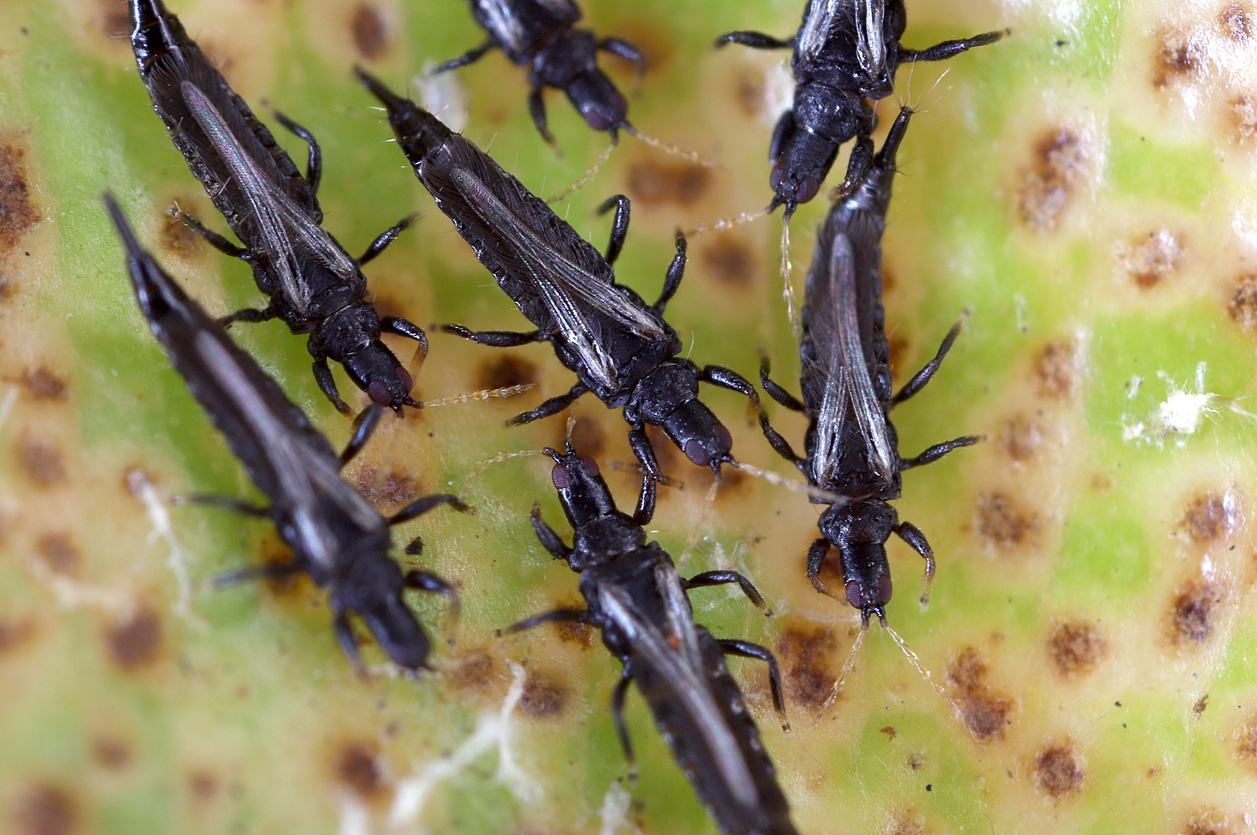
Thunder bugs don’t sting, but their bites can be slightly itchy and uncomfortable. Many residents find that the most effective way to get rid of thrips is to vacuum them up in droves. Sticky traps can also be effective because thrips are drawn to their bright yellow color. As far as keeping thrips out in the future, it’s best to keep doors closed when possible during the summer and make sure that open windows are protected with a screen.
Millipedes are not actually insects—they’re invertebrates related to lobsters and shrimp.
These creatures are usually about 1.5 inches long, and their shiny black color and multitude of tiny legs make millipedes unpleasant-looking to most. Fortunately, their appearance is not an indication of danger. Millipedes don’t bite or sting, but they do release a pungent chemical when threatened that can cause allergic reactions for those who are sensitive. Millipedes’ natural habitat is the damp soil underneath rocks, so they will often seek out similar conditions indoors in bathrooms and basements. It’s not common to find this long skinny bug in beds or on furniture.
Millipedes will typically enter a home only as a last resort to avoid extreme rain, heat, or cold. In many cases, they will vacate the home once conditions outside have gone back to a comfortable state. But if not, they can be easily vacuumed or swept up. Peppermint oil is also an effective deterrent that can keep them from returning in the future.
Skinny bugs with distinctive shortened front wings may be rove beetles.
Their lack of pincers as well as their shortened front wings makes them distinguishable from earwigs and scorpions, with whom they share some similarities. They may even curl up their tail when threatened the same way that a scorpion does. However, they do not have stingers and won’t harm humans in any way. These black bugs only reach a length of about ¾ inch and live in decaying leaf piles and compost heaps. Rove beetles can actually be useful in the garden as they primarily eat the larvae of other more harmful insects, but that doesn’t necessarily mean that they are welcome indoors. Finding this small long bug in the home is typically a one-off case, and infestations are unlikely. Since they do not bite or sting, rove beetles can be easily swept, swatted, or vacuumed up. Raking leaves promptly and keeping compost piles at a distance from the house is usually sufficient for keeping any additional rove beetles from wandering inside.
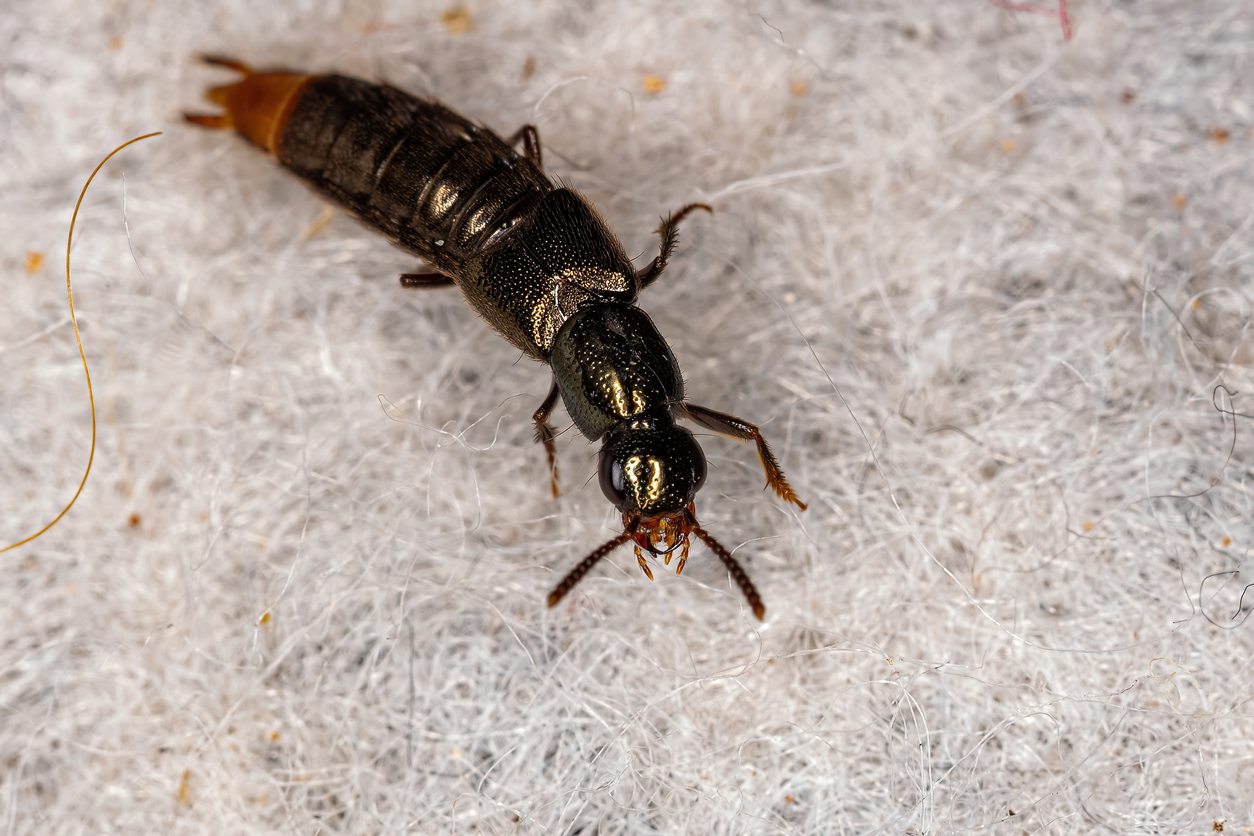
FAQs
Most homeowners aren’t thrilled to find little long black bugs in the house. However, being informed about what these insects are and whether they pose any risks can make the issue easier to deal with. Here are some answers to common questions about black bugs that may be found in the home.
Q. Are earwigs harmful?
Earwigs are completely harmless to humans. Their pincers are not powerful enough to hurt humans or pets who come into contact with them, and they do not have stingers. They also aren’t known to cause damage to homes, although they may eat some garden plants and seedlings.
Q. What are the long black bugs with pincers?
Those bugs are probably earwigs—an earwig is a long black insect with what looks like pincers. An earwig’s “pincers” are located at the back of its body, so a black bug with pincers on its head is not an earwig.
Q. Does vacuuming get rid of carpet beetles?
Vacuuming can be an effective way to pick up carpet beetles as well as their eggs or larvae. An even more foolproof way to get rid of carpet beetles is to spray vinegar or boric acid on the carpet first, then vacuum.
Q. Are silverfish harmful?
Silverfish are not harmful or dangerous to humans as they don’t bite and are not poisonous. However, they may cause damage inside the home as they eat paper, fabric, and pantry foods. If a silverfish infestation gets out of hand it’s common to find holes in wallpaper, books, furniture, rugs, and other items around the house.
Q. What does a carpet beetle look like?
One of the most common tiny brown bugs in the house is a carpet beetle. Adult carpet beetles are often speckled and range in color from black to brown and even orange or yellow. They have an oval shape and can reach just over an inch in size. Their larvae have a brown or amber color and appear hairy.
Q. Can I smell carpet beetles?
Carpet beetles do not give off an odor. Sometimes carpet beetles can be confused with bed bugs, and a severe bed bug infestation is often accompanied by a musty odor. If you have noticed this smell as well as other signs of bed bugs, it may be worth scheduling an inspection with one of the best bed bug exterminators.

